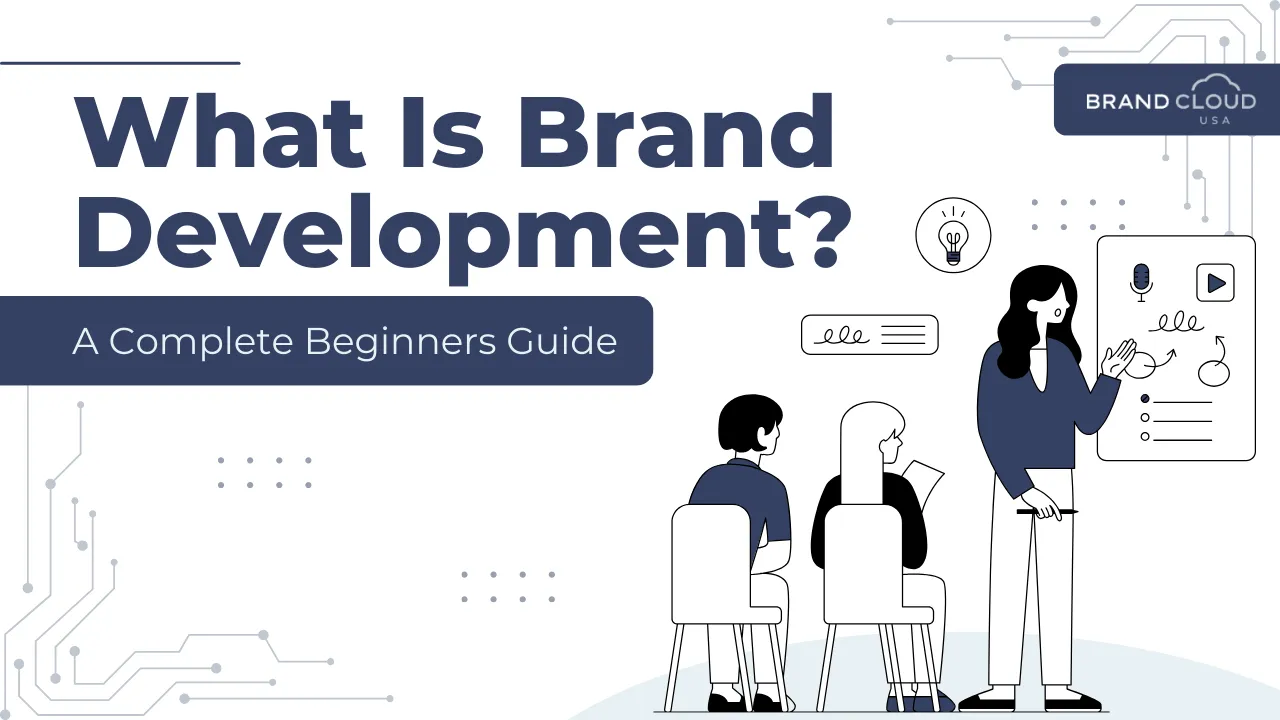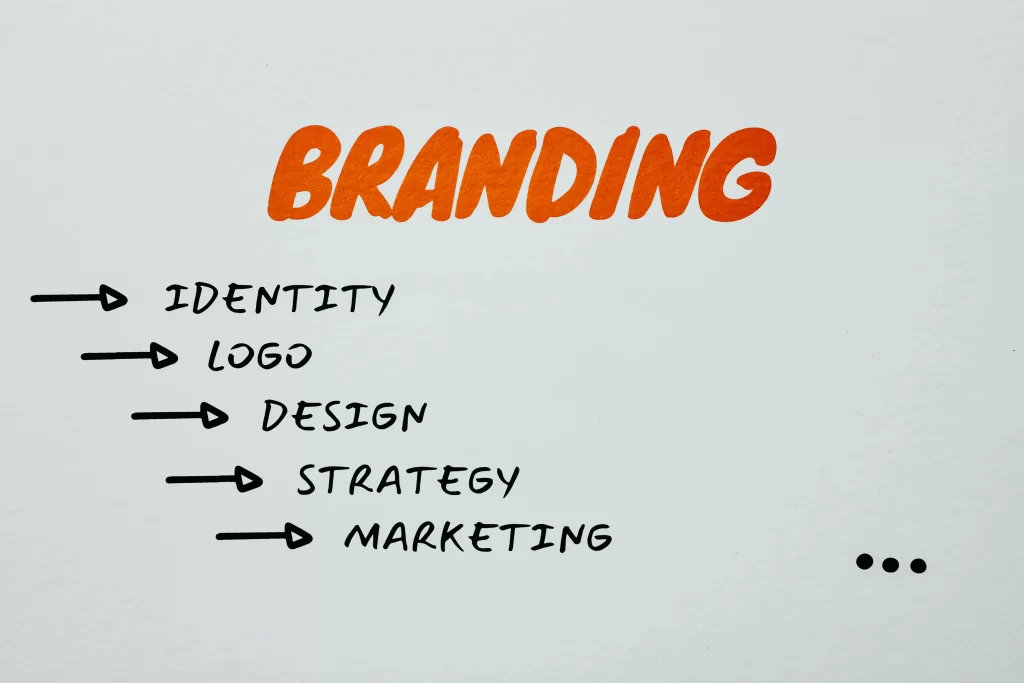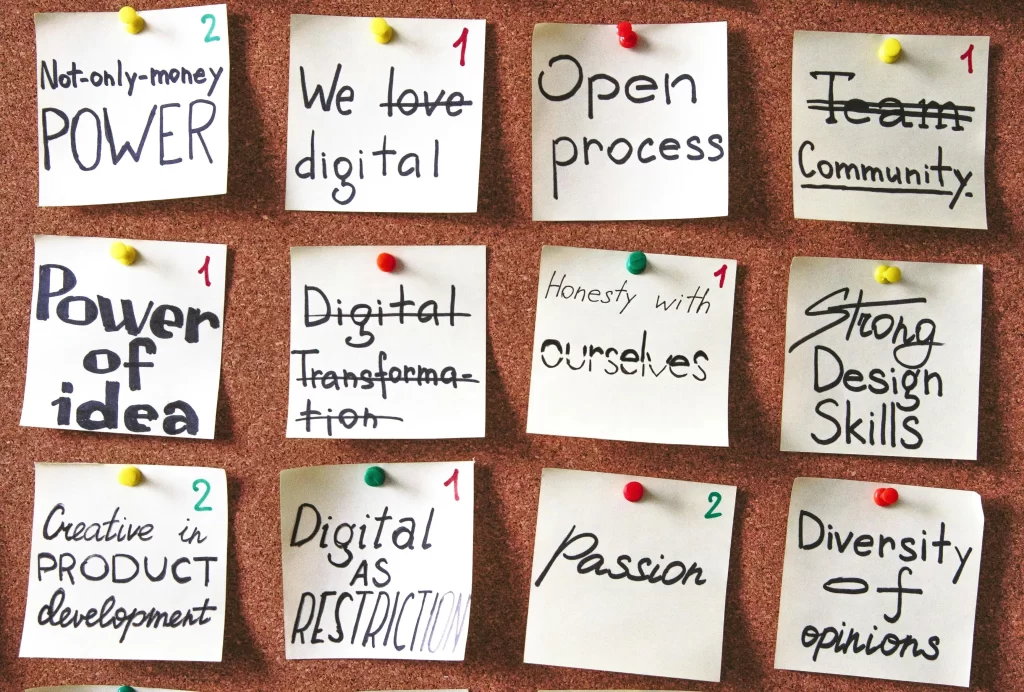
Thinking of starting your own business? Already have a brand but feel lost on where to begin with branding? You’re not alone, and we’re here to help! At Brand Cloud, we understand the challenges of building a brand from scratch. Our complete beginner’s guide will walk you through everything you need to know about brand development.
Brand development is more than just designing a logo or choosing a color palette. It’s about creating a cohesive and compelling presence that truly resonates with your target audience. From defining your mission statement to perfecting your tone of voice. Brand development shapes how your brand communicates and engages with the world.
Is There a Difference Between Brand Development and Branding?
While often used interchangeably, brand development and branding are distinct concepts that play crucial roles in establishing a successful business.
Brand Development
Brand Development is the strategic process of building and refining your brand’s identity and market positioning. It’s about laying the groundwork and creating a roadmap for your brand. This development process involves understanding specific points including:

By focusing on these elements, you can create an effective brand development strategy that resonates with both loyal customers and potential customers.
Branding
Once you know your business inside and out, it’s time to bring your brand to life. In the words of graphic designer Paul Rand, “Design is the silent ambassador of your brand.” Branding is how you do just that.
Branding is the is the execution of your carefully curated brand strategy. This includes creating a visual identity, designing product packaging, and implementing various marketing strategies. Think of brand development as the blueprint and branding as the construction process that brings your brand to life.
A solid strategy for brand development not only helps in attracting potential customers but also plays a significant role in retaining current customers. By aligning your brand’s message with the needs and expectations of your target audience, you foster customer loyalty.

In summary, while brand development and branding two halves to one whole. They serve different purposes within your business strategy. Together, they form a comprehensive approach to building a strong, memorable brand that thrives in a competitive landscape.
Why Brand Development Matters
Investing in brand development offers several benefits that are essential for any business looking to succeed in a competitive market.
Establishes a Strong Identity: A well-developed brand helps you stand out in a crowded market by clearly conveying your core values and unique selling propositions. This strong identity makes your business memorable and easily recognizable. As Wayfair Senior Brand Manager Jared Rosen puts it, “Brand identity is more than just finding the right logo to place on coffee cup sleeves or mount above your front door. It’s about crafting a personality that amplifies the core elements to your brand’s DNA.“
Builds Trust and Loyalty: Consistent brand messaging and visual identity build a sense of reliability and trust among your customers. When customers know what to expect from your brand, they are more likely to keep coming back time and time again.

Attracts Your Target Market: A strong brand attracts and retains the right customers. Understanding your target market allows you to tailor your brand messaging and marketing strategies to appeal directly to the people who are most likely to benefit from your products or services.
Supports Business Growth: A recognizable and trusted brand can drive business growth by enhancing customer retention, facilitating market expansion, and increasing your brand’s overall value. A strong brand can open doors to new markets and opportunities, as it instills confidence in potential partners and investors. Additionally, a well-established brand can command higher prices.
Steps to Brand Development
Define Your Core Values and Mission Statement:
We stated before how important your core values are, but we think they are so important we wanted to highlight them again! It’s always good to start by identifying what your brand stands for and what you aim to achieve. Your core values and mission statement will serve as the foundation for all your branding efforts.
Know Your Target Audience:
Conduct thorough research to understand your target market’s demographics, preferences, and pain points. This knowledge will guide your brand messaging and positioning. Using SurveyMonkey or Google Analytics are a great way to gather this information. SurveyMonkey allows you to survey your potential customers getting the information straight from the source. Whereas Google Analytics gives you information on your websites visitors.
Design Your Visual Identity:
Create a brand style guide to ensure you have a unified voice and presence across every channel. This includes your logo, color scheme, typography, and other design elements. This should reflect your brand’s personality and appeal to your target audience.
Craft Your Brands Voice:
Determine how your brand will communicate with its audience. Your tone of voice should be consistent across all channels. Is your brand voice formal and clear? Or is it trendy and playful? Whatever your tone is, being consistent with it will allow your customers to feel welcomed with every piece of copy they read. Like being greeted by an old friend.
Future Trends in Brand Development
The landscape of brand development is constantly evolving- and your business should evolve with them! Looking at current trends we have identified some trends to watch:
Personalization
Brands are increasingly focused on personalized experiences. Tailoring their messaging and offerings to individual customer preferences. Utilizing data analytics and customer feedback, businesses can create more relevant and engaging interactions. Personalization is becoming essential as 77% of shoppers are more likely to buy from brands that offer personalized experiences.
Sustainability
More and more consumers are becoming environmentally conscious, so addressing a brands environmental impact is quite important to your brand overall. Companies that adopt green initiatives not only appeal to eco-conscious consumers but also contribute positively to the planet. According to a 2023 Nielsen report, 73% of millennials are willing to pay extra for sustainable offerings.
Digital Integration
The integration of digital technologies, such as AI and AR, will enhance customer engagement and provide immersive brand experiences. These technologies allow for innovative ways to interact with products and services, creating memorable experiences for customers. AI-driven personalization and customer service are enhancing the customer experience by providing efficient and round-the-clock support.
Authenticity
This can go hand in hand with personability. Brands that are more authentic, are more easily perceived as personable. Consumers are seeking authentic brands that are transparent and genuine in their actions. Brands that stay true to their values and communicate openly with their audience are more likely to build strong, lasting relationships.
Community Building
Creating a sense of community around a brand can build customer loyalty and advocacy. This can be local to your area, or be strictly an internet community. Successful brands are increasingly focusing on building communities through social media, events, and interactive platforms where customers can engage and share experiences.
By staying ahead of these trends, you can develop strategies that not only meet current market demands but also anticipate future shifts.
Takeaway
Brand development is a key part of building any successful business. By understanding its importance and following a thoughtful approach, you can create a strong, cohesive, and appealing brand. One that truly connects with your target audience and stands the test of time. This isn’t a one-time task—it’s an ongoing process that needs regular updates and tweaks. As market trends change and your business grows, your brand strategy should evolve to stay fresh and effective.
Keeping your brand’s message engaging with a solid content marketing strategy can help maintain its relevance. At Brand Cloud, we’re here to help with all aspects of brand development, brand lifting, and brand security. Our team of experts can guide you in creating a solid brand strategy that adapts to changes and drives long-term success. Reach out to us today and discover how we can help take your brand to the next level.
